The genus name, Hortiboletus, refers to the latin ‘hortus‘ meaning garden where the Hortiboletus bubalinus can often be found growing with Poplar or Lime trees.
Home / Mushroom Guide /
Ascot Hat
Ascot Hat
| Mushroom Type | |
| Common Names |
Ascot Hat (EN), Poplar Bolete, Cap Tyllog Bwff (CY), Parkogrzybek Morelowy (PL), Homoki Tinóru (HU) |
| Scientific Name |
Boletus / Hortiboletus bubalinus |
| Synonyms |
Boletus bubalinus, Xerocomus bubalinus, Xerocomellus bubalinus |
| Season Start |
Jul |
| Season End |
Oct |
| Average Mushroom height (CM) |
6-10 |
| Average Cap width (CM) |
6-10 |
Please note that each and every mushroom you come across may vary in appearance to these photos.
Cap
6-10 cm. Pale brown with slight red or yellow hues, lighter towards the edge. Starts of rounded but becoming flatter and more uneven with age.
Pores
Yellow to pale yellow sometimes with olivaceous hints. Angular not round and bruising blue/green.
Stem
6-10 cm long, 1-1.5 cm diameter. Fairly thin for a Bolete, pale background covered in vertical red ‘fibres’.
Flesh
Off white/yellow in the stem. White in the cap staining pink under the cuticle and blue above the pores.
Habitat
Often in parks, gardens and urban environments under Lime or Poplar trees.
Possible Confusion
Other Boletes but none of the poisonous varieties.
Spore Print
Olive brown. Subfusiform.
Taste / Smell
Mild.
Frequency
Not reported much before 2000 but becoming more common or more often reported.
Other Facts
Was Boletus bubalinus then becoming Xerocomus then Xerocomellus before, for now anyway, settling with Hortiboletus.



 (25 votes, average: 3.72 out of 5)
(25 votes, average: 3.72 out of 5)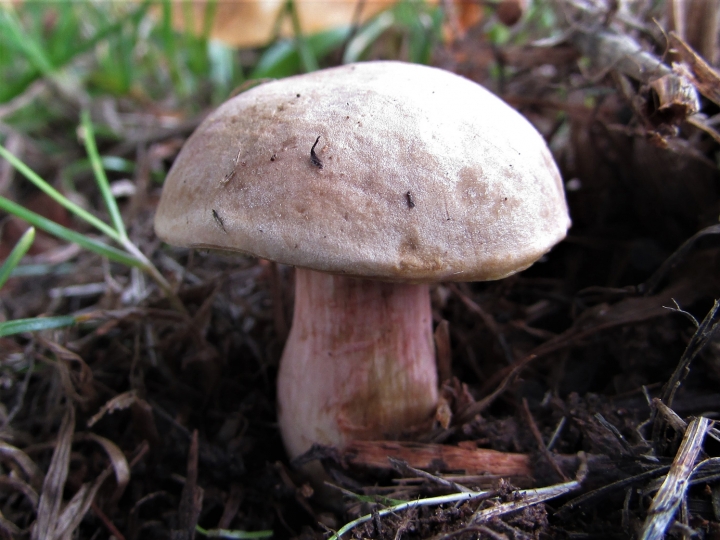
















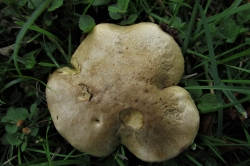
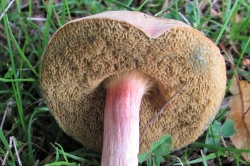
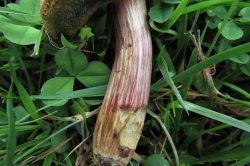
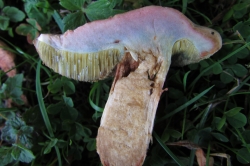
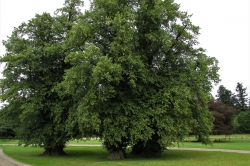




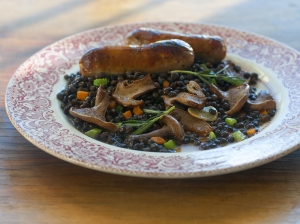






Leave a Reply